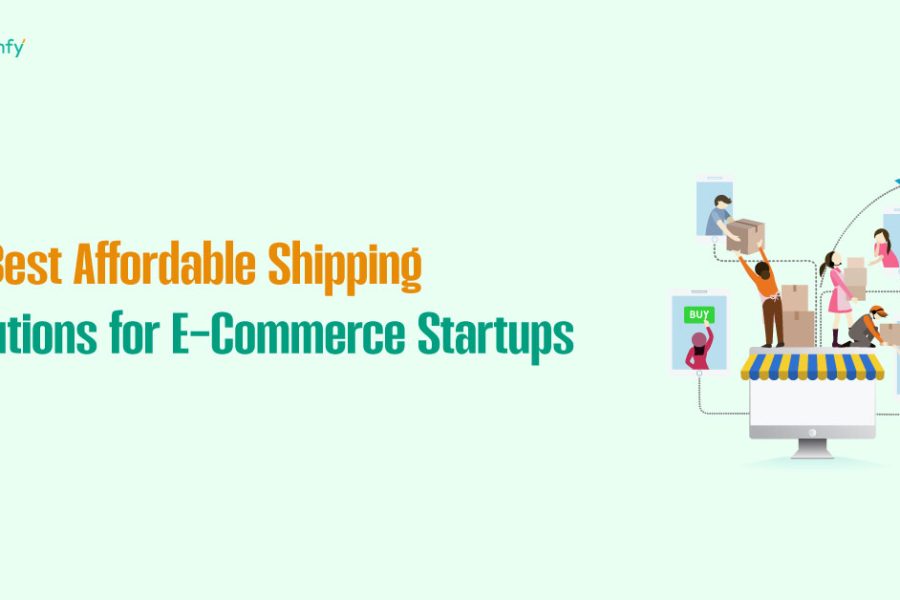A good online store needs more than just products. To succeed in today’s digital market, your e-commerce site must load fast, work smoothly across all devices, and deliver a seamless shopping experience. E-commerce performance optimization focuses on site speed, mobile responsiveness, technical SEO, and conversion rate optimization (CRO) to help your online store reach its full potential.
Many brands now rely on E-commerce Performance Optimization Services to boost online sales and enhance customer satisfaction. These services include site speed optimization, user experience (UX) design improvements, checkout process optimization, and mobile commerce enhancements.
This guide explains e-commerce performance optimization, why it matters, and how to implement it. You will discover simple, actionable ways to make your site faster, easier to navigate, and more effective at turning visitors into loyal customers.
Table of Contents
ToggleWhat is E-commerce Performance Optimization?
E-commerce performance optimization means improving how your online store functions, whether you use Shopify, WooCommerce, Magento, or another platform. It involves making your site faster, easier to use, and more efficient at converting traffic into sales. Optimizing key areas like page load time, navigation flow, and conversion funnels creates a better shopping experience that drives repeat purchases and customer loyalty.
Why Is E-commerce Performance Optimization Important?
Today, people want online shopping to be fast and simple. If your website is slow or hard to use, they might leave and buy from another store. By improving your e-commerce site, whether you use WooCommerce website design or learn how to build a website on Shopify, you can ensure it works well for today’s shoppers and keeps them coming back.
Key Parts of E-commerce Performance Optimization

To make your Shopify or WooCommerce store work its best, focus on these key areas:
Website Speed Optimization
Here is how you can optimize your e-commerce website:
Page Load Time
If your website takes too long to load, it can hurt your business. Studies show that even a one-second delay can lead to fewer sales. To make your site load faster, try using lazy loading, image compression, and reducing the number of things that need to load. Tools like TinyPNG can help with image compression, making your site load quicker.
Browser Caching
Browser caching allows your website to save information in a visitor’s browser. This means it doesn’t need to reload everything when they visit again, making your site faster for repeat visitors.
User Experience (UX) Improvement
Improve the user experience by following these steps:
Mobile Optimization
Over half of online shopping happens on mobile devices like phones and tablets. That’s why your site must work well on these devices. This is called responsive design. It means your site will look good and work well on various screens.
Navigation Structure
Your website should be easy to use, with simple menus that help people quickly find what they want. A good navigation structure makes the shopping experience smoother.
Accessibility Best Practices: It’s important to ensure everyone can use your website, including people with disabilities. This means adding alt text for images, describing what’s in the picture, and ensuring the site works with keyboard shortcuts and screen readers.
SEO for E-commerce
Here are the best e-commerce SEO practices you can follow:
On-Page SEO
To ensure your Shopify store appears in search engines like Google, you must use on-page SEO. This means using essential keywords in titles, descriptions, and throughout your content. Good SEO helps your site appear when people search for things related to your products.
Technical SEO
Technical SEO is about improving your site’s back end for search engines. It includes a clear site structure, a secure HTTPS connection, and an optimized XML sitemap, all of which help search engines understand your site better.
Structured Data Markup
Adding structured data to your site helps search engines understand your content more easily. This can lead to rich snippets in search results, attracting more clicks.
Conversion Rate Optimization (CRO)

Conversion Rate Optimization (CRO) is about turning visitors into paying customers. Here’s how you can do it:
A/B Testing for E-commerce
Experiment with Elements: A/B testing involves creating two versions of a page with small differences, like different headlines or images. Testing these versions lets you see which one gets more people to buy. This helps improve your conversion rate over time.
Checkout Process Optimization
Streamline Checkout: The checkout process should be quick and easy. This is called checkout process optimization. Reduce the number of steps, offer different payment options, and ensure your site is secure. This builds trust with customers and can help reduce cart abandonment.
Landing Page Optimization
Focus on First Impressions: Your landing page is often the first thing a customer sees. Make sure it looks good, loads quickly, and clearly shows the value of your products. This is known as landing page optimization, and it’s key to making an excellent first impression.
E-commerce Analytics and Monitoring for E-commerce Performance Optimization

To keep improving your e-commerce site, tracking its performance and analyzing the data is important.
E-commerce Analytics Setup
Track Key Metrics: Tools like Google Analytics help you see how well your site is doing. Track important things like bounce rate (how many people leave your site after viewing just one page), session duration (how long people stay on your site), and conversion rate (how many visitors become customers). This information is key to site performance enhancement.
Key Performance Indicators (KPIs)
Define Your KPIs: KPIs are important measurements that show how well your site is doing. Common KPIs include conversion rate, average order value, and customer lifetime value. Regularly check these metrics to see if your site is meeting its goals.
Traffic Analysis
Understand Your Audience: Use traffic analysis to find out where your visitors are coming from, which pages they spend the most time on, and where they leave. This information can help guide your eCommerce optimization services and improve your site.
Personalization and Advanced Techniques for E-commerce Performance Optimization
To improve your e-commerce site, use advanced techniques like personalization in e-commerce and AI.
Customer Journey Optimization
Target Specific Audiences: Customer journey optimization involves segmenting your customers based on their behavior and preferences. Use this information to create targeted marketing campaigns that speak directly to different customer groups.
Product Page Optimization
Boost Sales with AI: Use AI to recommend products based on what customers have looked at or bought. This can improve the user experience (UX) and increase average order value.
Dynamic Content in E-commerce
Personalized Experiences: Dynamic content changes based on the user’s behavior or characteristics. For example, showing different banners or promotions to new visitors versus returning customers can create a more personalized shopping experience.
Real-Life Examples of E-commerce Performance Optimization
Here’s how some e-commerce businesses have successfully improved their sites:
| Company | Optimization Strategy | Result |
| XYZ Apparel | Website speed optimization through image compression | Reduced load time by 40%, leading to a 20% increase in conversions |
| HomeGoods Plus | Checkout process optimization with streamlined steps | Abandoned cart rate decreased by 15% |
| Gourmet Foods Co. | Personalization with AI-driven product recommendations | Average order value increased by 25% |
Common Mistakes to Avoid for E-commerce Performance Optimization

When optimizing your e-commerce site, it’s easy to make mistakes. Here’s how to avoid them:
Too Many Plugins: While plugins can add cool features, using too many can slow down your site. Only use the necessary ones and check regularly to see if they affect your site’s speed.
Ignoring Mobile Users: If you don’t optimize for mobile, you could lose many customers. Ensure your site is responsive and provides a good experience on all devices.
Neglecting Security: Your site could risk attacks without proper security. Use HTTPS, secure payment gateways, and regularly check your site for security issues.
Key Takeaways for E-commerce Performance Optimization
Here are the key takeaways for e-commerce performance optimization:
Loading Time Improvement: Faster websites make customers happy and increase sales.
Responsive Design is Key: A well-designed site that’s easy to use keeps customers engaged and reduces bounce rates.
SEO for E-commerce Boosts Visibility: Optimize your content and technical elements to rank higher in search engines.
Conversion Rate Optimization (CRO) Increases Sales: Test and refine your site to turn more visitors into customers.
E-commerce Analytics Drives Improvement: Monitor your site’s performance regularly and use the data to guide your optimization efforts.
Personalization in E-commerce Enhances Engagement: Tailor your content and product recommendations to individual users for a more personalized shopping experience.
Conclusion
E-commerce Performance Optimization is an ongoing process that requires attention and effort. By focusing on key areas like website speed, user experience (UX) improvement, SEO for eCommerce, and conversion rate optimization (CRO), you can create an e-commerce platform that meets and exceeds customer expectations. Implement these strategies, monitor your progress, and keep adapting to stay competitive in online shopping.
Frequently Asked Questions (FAQs)
What is the fastest way to improve my e-commerce site speed?
The fastest way is to compress images, enable browser caching, and use a content delivery network (CDN). These changes can quickly reduce load times and improve performance.
How can I tell if my online store is mobile-friendly?
You can use Google’s Mobile-Friendly Test tool to check how your website performs on mobile devices. Ensure your design is responsive and all elements are easy to use on smaller screens.
What is a good conversion rate for e-commerce stores?
A typical e-commerce conversion rate is between 2% and 3%. However, this varies by industry and product type. Regular A/B testing and CRO can help improve your conversion rate over time.
How does technical SEO help my online store?
Technical SEO ensures that search engines can easily crawl, index, and understand your site. This includes having a clear site structure, fast loading times, secure HTTPS connections, and optimized sitemaps.
Why is personalization important in e-commerce?
Personalization helps you deliver a shopping experience tailored to each customer’s behavior and preferences. By making shoppers feel understood and valued, this increases engagement, boosts sales, and improves customer loyalty.





